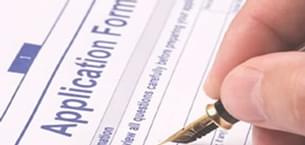Australia is regarded as one of the top places globally for pursuing higher education and every year over 500,000 overseas students enroll in Australian Universities. Some of the top universities like ANU, University of Melbourne, and University of Sydney offer various intakes in Australia. Due to the high-tech surroundings, enviable campus facilities, innumerable post-degree opportunities in Australia, and significant global exposure, Australia serve as a perfect place to explore one’s academic interests.
Unlike Indian universities, Australia offers multiple intake seasons in a year for domestic as well as an international aspirant. Due to which, 98,379 students enrolled themselves in Australian universities in year 2021. The three intake seasons for institutes in Australia are summarized below.
- Semester One: The semester starts in late February or early March and ends in late May or early June. It is selectively popular among Indian applicants.
- Semester Two: The semester starts in late July or early August. This intake is the most popular among Indian students.
- Semester Three: The semester starts September to late November. A limited number of courses are available for this particular intake season.
Intakes in Australia: Timeline
The preparation for getting enrolment into an Australian university starts well before the application. International students need to very carefully and select the time schedules during which they are planning to collect their application materials, give standardized tests in Australia, check eligibility requirements, start applying to universities, to pursue higher education in Australia.
Below is given a basic plan for planning a schedule for international aspirants looking to apply to Australian universities.
| Preparations | Semester 1 or the February intake | Semester 2 or the July intake | Semester 3 or late November intake |
|---|---|---|---|
| Research and shortlist courses and universities | As early as possible, preferably 10 to 11 months prior to April to June | 10 to 11 months before the start date of the semester, preferably September to October of the previous year | 10 to 11 months before the semester date, around November to December of the previous year |
| Compare and apply to the universities | July to August of the previous year | November to December of the previous year | January to February of the applying year |
| Appear for the standardized tests | September to October of the previous year | December to February of the applying year | March to April of the applying year |
| Start applying to colleges | October to November of the previous year | February to March of the applying year | May to June of the applying year |
| Acceptance and interview process | November to December of the previous year | March to April of the applying year | July to August of the applying year |
| Apply for a student visa in Australia Education Loan | December to January of the applying year | May to July of the applying year | September to October of the applying year |
| Start making travel arrangements | January to February of the applying year | June to July of the applying year | November to December of the applying year |
Admission Deadlines for Intakes in Australia
International students need to get accustomed to the deadlines of the intakes in Australia season they are planning to apply for admission to Australian universities. Australian universities accept applications from Indian students for the February intake, July intake, and September or November intake.
Planning way earlier before submission ensures that an individual has ample time to organize the prerequisites associated with admission in the desired intake in Australia. Students also get the liberty of calculating the cost of living in Australia before the admission deadlines. The intake seasons and their details are mentioned further below.
Explore: MBA In Australia Admissions!
Semester 1 (Starts in Late February or Early March)
The late February or early March intake is popular for a large number of courses in Australia. Most international students prefer to opt for the July intake in Australia, but the February intake is the primary intake season since most pursued and sought-out courses are offered in this particular semester after study in Australia. A lot of international students also apply at this intake after completing all the necessary paperwork and collecting all the necessary admission materials required.
The deadlines for most popular educational institutes in Australia for the February intake are in September to January, and most of the deadlines are based around December. There are some universities that also accept applications throughout the year. The most popular institutes and the deadlines for Semester 1 or late February to early March are tabulated below.
| Name of the university | Semester 1 Application Deadlines |
|---|---|
| University of Melbourne | October 31 |
| University of Sydney | January 15 |
| University of Queensland | November 30 |
| Australian National University | December 15 |
| Monash University | October 17 |
| University of Western Australia | December 1 |
| University of Technology, Sydney | Rolling |
| University of Canberra | January 17 |
| Charles Sturt University | October 28 |
| University of Newcastle | October 3 |
Semester 2 (Starts in July)
The July intake is the most preferred among Indian students since it gives them ample time to arrange their application materials, collect letters of recommendation, build CV/Resume and collect their mark sheets from their national institutes. Though the February intake has a large number of courses available, the July intake can be equally good for the above-mentioned factors. Students need to appear for the standardized tests in Australia and English proficiency tests from December to February to apply for this particular intake season.
The admission deadlines range from March to June for the Semester 2 intake and some universities also accept applications throughout the year. Below is given a table that summarizes the most popular universities and the admission deadlines for semester 2 or the July intake season.
| Name of the university | Semester 2 Application Deadlines |
|---|---|
| University of Sydney | June 25 |
| Australian National University | May 31 |
| University of Melbourne | May 31 |
| University of New South Wales | March 31 |
| University of Queensland | May 31 |
| University of Western Australia | December 1 |
| University of Technology, Sydney | Rolling |
| Macquarie University | February 15 |
| University of Canberra | July 14 |
| University of New England | October 25 |
Semester 3 (Starts in November)
Semester 3 or the November intake is the least popular intake but it can still be considered good for a certain number of courses. Only a specific number of universities offer courses and mostly vocational courses are offered in this intake.
The admission intakes are in July, October, and November depending on the university and the type of course, undergraduate or postgraduate. The semester 3 admission intake deadlines and the universities offering intake are given below in a tabular format.
| Name of the University | Semester 3 Application Deadlines |
|---|---|
| University of New South Wales | September 30 |
| Charles Sturt University | September 1 |
| University of New England | May 1 |
| CQ University | November 7 |
| University of Southern Queensland | November 14 |
Which Intake in Australia to choose?
International students can get a little confused regarding which intake season they should opt for. All three intake seasons have their own pros and cons, which might pose challenges for international applicants while selecting a specific intake season and applying accordingly. There are factors one needs to keep in mind before selecting a particular intake in Australia.
- Students should check for the availability of their preferred program for all the intake seasons.
- Students should also take into account the scores required, their chances of selection should be predicted and sorted out before applying.
- The standardized test scores and English proficiency test scores of the student should be taken into account.
- The acceptance rates for some intake seasons might be high while for some it can be low.
- Employment opportunities in Australia and success rates after graduating from an intake season’s batch should be considered.
- Lastly, and most importantly, the candidate should have all the application materials ready before joining an intake season.
If an applicant is ready for the application procedure, they can make their decision and select an intake season. After that, they must fulfill all the application prerequisites and be ready.
Explore: Australia’s Government Plan on Diversity and Skill Enhancement!
Intakes in Australia: Pros and Cons
The intake seasons in Australia have some advantages and disadvantages, or pros and cons associated with them. Candidates should check out the availability for each course and university for their preferred intake season and apply accordingly. The pros and cons for the three semesters for intakes in Australia are given below.
| Intake Seasons | Pros | Cons |
|---|---|---|
| Semester 1 (starts in late February or early March) | A large number of seats are available as well as an abundant number of courses. There are also more scholarship options for applicants. The weather is also ideal for incoming students. | Since a large number of students apply, the competition is also fierce. Also, Indian students generally cannot come up with all application materials within the specified time. |
| Semester 2 (starts in June) | Most international students apply for this intake owing to the ideal time frame for assembling all admission documents. The competition is also less compared to the February intake. | All universities do not provide all courses during this intake season. Also, seats for international students are limited and this intake season witnesses the largest number of international applicants. |
| Semester 3 (starts in November) | The competition is very low since a very small number of applicants apply during this particular semester. | Only a number of courses and mostly just vocational courses are offered from a selected number of institutes. This semester is also not known for admitting a lot of international students since application materials cannot be acquired within the given time frame. |
MBA intakes in Australia
MBA is one of the most pursued postgraduate courses among international applicants and every year a significant number of candidates apply for this course at different universities around the world. The course duration for MBA in Australia is usually between 15 months to two years, depending on the university.
The MBA admission deadlines fall between October to December of the current year. A table of admission deadlines for MBA courses in Australia along with the top universities offering the course is given below.
| Name of University | Intake Season | International Application Deadline |
|---|---|---|
| Melbourne Business School | September intake |
Round 1: 30 November 2022 |
| University of New South Wales: Australian Graduate School of Management | All intakes | Round 1: 1 August, 2022 Round 2: 1 September, 2022 Round 3: 1 October, 2022 Round 4: 1 November, 2022 Round 3: 1 December, 2022 Round 4: 1 February 2023 |
| Monash University: Monash Business School | All intakes | Round 1: April 30 Round 2: June 30 Round 3: August 20 |
| University of Queensland Business School | All intakes | 30 November |
| Macquarie University: Macquarie Graduate School of Management | All intakes | Term 1: January 10 Term 2: April 4 Term 3: June 27 Term 4: September 19 |
| University of Western Australia Business School | July intake | November 12 |
| Australia National University | July intake | November 1 |
| Deakin University- Deakin Business School | February intake | February 20 |
| University of Wollongong Sydney campus | February and July intake | December 2 |
Also Check:
How to Apply for Admission Intakes in Australia?
No matter which admission intake season a student chooses, they need to be prepared beforehand. It is recommended to start applying as early as possible to maximize chances at admission for the preferred intake. Most universities in Australia follow a first cum first serve based admission procedure, therefore candidates need to follow a specific pattern starting from shortlisting the universities.
June semester witnesses the most number of applications from international students, therefore it also offers competition. The February intake offers courses from most universities, therefore it is also a well-pursued intake season.
International applicants need to fulfill the criteria for admission which includes standardized tests, English proficiency tests, and additional admission requirements. TOEFL, IELTS is the preferred English proficiency tests. The document requirement checklist also depends upon the university one is planning to apply to. GRE/GMAT scores are usually required for participation in postgraduate programs in Australian universities.
Intakes in Australia: Documents Required
The admission requirements vary from university to university in Australia. However, there are some basic documents that are required in almost any institute for higher education in Australia. They are listed below.
- Application form filled up with all the relevant details.
- The application fees of the university.
- English proficiency test scores like IELTS/TOEFL/PTE.
- Reports and academic certificates from previous institutions, translated into English.
- Evaluated score reports of national or regional board examinations.
- The minimum required GPA.
- Photocopies of the first and last page of the passport.
- Standardized test scores like SAT/ACT or GRE/GMAT.
- Statement of purpose.
- Letters of recommendation from academic teachers.
- Financial documentation containing bank statements or statements from a financial advisor.
- Job experience certificates, if available.
- Medium of instruction.
- CV/Resume.
- Interviews are required in some cases.
- Self-written academic essay.
- Immigration documents.
Deadlines for Scholarships in Australia
Studying in Australia is a costly affair; however, with the help of financial needs, international students can fund their education easily. There are various fee waivers, scholarships, assistantships, etc that can assist a student in affording their education in Australia. Some of the most popular scholarships in Australia for international students along with the intake seasons and deadlines are given below.
| Name of the Scholarship | Intake Season | Deadline |
|---|---|---|
| Australian Government Research Training | Course starts in January | 6 August, 3 December 2021 18 April 2022 |
| Griffith Remarkable Scholarship | Course starts in 2021/22 | 6 August, 3 December 2021 18 April 2022 |
| University of Sydney International Scholarship | Course starts in 2022 | 30 September, 30 November 2021 |
| ADB Japan Scholarship program for developing countries in Asia and Pacific | Course starts in 2021/22 | No specific deadline |
| The Global Excellence Scholarship at the University of Western Australia | July semester | 23 July |
| CDU Vice Chancellor’s International High Achievers Scholarships | July semester | 30 June |
| Vice Chancellor’s International Scholarship scheme at University of Sydney | August semester | 5 July |
| Adelaide Global Academic Excellence Scholarships for International students | July semester | 30 June |
It is usually seen that most international or specifically Indian students prefer applying for the July or second semester for applying to universities in Australia. Since most students receive their mark sheets and test scores by that time, it is easier to apply during that semester along with other admission requirements.
February intake offers the maximum number of courses and the November semester offers the least competition, therefore they can also be considered depending on the candidate’s academic situation. Choosing the right intake directly influences the candidate’s future since following the time frame, candidates can pursue higher education or employment upon completion of the selected course.
FAQs
Ques. Which intake season should a student choose while applying to study in Australia?
Ans. It depends highly on the applicant’s academic standing. However, most international students prefer to apply for the July intake since they get a lot of time to prepare beforehand. However, February intake offers the most number of courses while the least popular November intake poses little competition.
Ques. When should an international student start preparing for the July intake in Australia?
Ans. Ideally, an international student should start shortlisting universities 10 or 11 months prior to the start date of the program. They should start preparing in September to October of the previous year.
Ques. When should an international student start preparing for the February intake in Australia?
Ans. For the February intake, a student needs to start as early as possible since the competition is very fierce. They should start preparing from April to June of the previous year to get a shot at admission.
Ques.What documents are required for admission to Australian universities?
Ans. The documents required vary from university to university in Australia. However, the basic requirements include academic transcripts, English proficiency test scores, standardized test scores, passport, financial documents, health insurance, SOP, LOR, personal essay, and work experience.
Ques. When should an international student apply to Australian universities in order to avail scholarships?
Ans. Typically, most scholarships are offered during the February or second semester. Most universities, however, offer scholarships to international students throughout the entire year.
























Comments